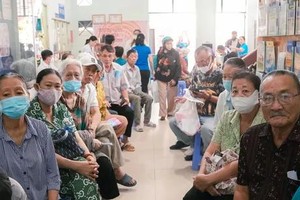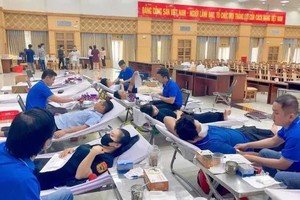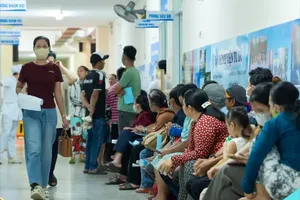
The Ho Chi Minh City Department of Health today said that the Infectious Disease Surveillance System in Ho Chi Minh City in 2024 recorded the number of respiratory infections ranging from 16,000 - 18,000 cases per month in the first 8 months of the year and increasing in the last 3 months of the year. Respiratory diseases tend to increase when the weather turns cold, however, there have been no unusual fluctuations in the number of cases or serious illness in hospitals.
Health experts have clarified that HMPV is not a new virus. It was first identified in 2001 and it has been circulating in the entire world since many years. The HMPV virus, while less prevalent than other respiratory viruses in children such as rhinovirus (44.6 percent ), respiratory syncytial virus (RSV) (41.1 percent ), and influenza A (25 percent ), has been previously detected in Ho Chi Minh City.
The findings from the community-acquired pneumonia agent research program, conducted in partnership with the Oxford University Clinical Research Unit (OUCRU), the Hospital for Tropical Diseases, Khanh Hoa General Hospital, Nha Trang Pasteur Institute, and the National Center for Infectious Diseases of Singapore as part of the PREPARE project, indicate that the causative agents remain predominantly common viruses and bacteria.
The analysis of test results from 103 patients diagnosed with community-acquired pneumonia, comprising 56 children and 47 adults, who were admitted to the Hospital for Tropical Diseases in Ho Chi Minh City between July and December 2024, revealed that human metapneumovirus (HMPV) represented a minor fraction (12.5 percent in children) relative to other pathogens associated with community-acquired pneumonia. In children, the more prevalent pathogens identified included H. influenzae (71.4 percent ), S. pneumoniae (42.9 percent ), influenza A virus (25 percent ), rhinovirus (44.6 percent ), and respiratory syncytial virus (RSV) at 41.1 percent .
In late 2023, during the surge of respiratory infections among children in Ho Chi Minh City, monitoring efforts identified a range of common viral pathogens, with HMPV detected at a rate of 15 percent . The Department of Health has advised against complacency regarding potential developments.
Consequently, the Ho Chi Minh City Department of Health has instructed the City Center for Disease Control (HCDC) and healthcare facilities to maintain vigilant oversight of the global epidemic situation. They are prepared to implement medical quarantine measures at airports and seaports as directed by the Department of Preventive Medicine (Ministry of Health) to facilitate early detection and mitigate the risk of disease transmission, if necessary.
Furthermore, ongoing domestic epidemiological surveillance will include tracking respiratory infection cases, monitoring hospitalizations for severe acute respiratory infections, assessing respiratory pathogens, and observing events such as clusters in schools, factories, and communities to ensure timely interventions.
Human metapneumovirus (HMPV) can cause upper and lower respiratory disease in people of all ages, especially among young children, older adults, and people with weakened immune systems. Discovered in 2001, HMPV is in the Pneumoviridae family along with respiratory syncytial virus (RSV). It commonly causes upper and lower respiratory tract infections in young children. The virus that usually causes symptoms similar to a cold. Infected people might cough or wheeze, have a runny nose or a sore throat.
























